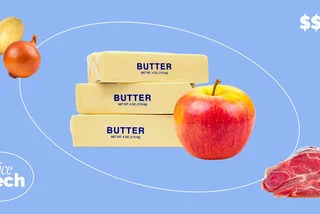The pandemic has accelerated digitization not just in the Czech Republic but throughout the world. In 2021, we shop online more than ever before, we work online more than ever before, we use online services more than ever before. Enterprises that have missed this momentum are facing losses and stagnation. Although the Czech Republic is considered a global hub of tech innovation, many companies still fail to keep up with the changes that have accelerated the development of UX/UI design.
What is trending in UX/UI and what are the directions we expect to be seeing more of in the coming years? We asked professionals from the tech company Semrush to introduce the current design trends that are here to stay.
What is UX/UI? If you’ve swiped or tapped an app or clicked your way through a website, you’ve encountered a web designer's work. The two concepts overlap but perform different functions. UX is how people interact with and experience a product, system, or service. UI, which stands for user interface, is related to the graphical layout of an application such as buttons, text, and images. Together, both concepts determine how easy or difficult it is to navigate a website.
Trend 1: UX and AI merge
It should come as no surprise that artificial intelligence currently reigns in any of the sectors where it's a fit, even if slightly so. Interlinkage in UX/UI design can be witnessed with the AI on the artificial neural network level. “This is a rather general trend in IT - sooner or later you have to surrender, whether you like it or not,” says Anton Dukanich, UX Designer for Semrush.
“What's most important for designers is to understand how to use AI data: is it truly helpful for the user? Does the user understand this data? If both conditions are met, AI will help with minimizing unnecessary and routine tasks, speed up the processes and maybe even bring some inspiration.”
In the case of UI, we see the influence of artificial intelligence in simplified forms and questionnaires that are now usually pre-filled for users’ maximum convenience. Some information can easily be withdrawn or evaluated from the previous interactions. For example, CAPTCHA code used to be visible, and every visitor to a site had to go through it before opening. Nowadays, CAPTCHA is running in the background, while the user is browsing a website.
Trend 2. Tolerance
This trend, which is somewhat common in US and Western Europe trend, is slowly but surely coming to our region. “When we were designing the Persona tool for Semrush, we got feedback from the agency that the stock photos we had decided to use were not supportive of a diversity and tolerance mindset," says Dukanich. "The idea behind the webpage was to create several characters the user will identify with and stroll through the tool in one of those roles."
“Even though we had initially tried to choose photos covering all age, ethnic and gender groups, soon it was made clear that some of those photos were too stereotypical. As a designer, I am not in the position to push my own ideas and expectations to the user - I create content that should be as universal as possible.”
It is expected that soon, this trend will be impossible to neglect when working with target groups and web design. What we are witnessing already, according to Semrush’s professionals, is a significant drop in stock photo usage: instead, it starts to be more about gender-neutral characters, animals, and graphic images. This trend goes as far as depicting illustrations that are so exaggerated and disproportionate that the link with real people is hardly present.
Trend 3. Bright colors
This trend is relevant for the UI (user interface), what we see on the page as we browse it. Usage of bright, colorful illustrations, fonts, or backgrounds will easily catch your eye and facilitate capturing a brand’s message. What’s more, it’s proven that colors affect our mood and psychical condition, and - when used wisely - can stimulate positive associations. That is why companies opt for this strategy, in order to stand out from the competitors.
“However, there are certain rules each UI designer ought to keep in mind,” warns Julia Mnizhek, UI Designer for Semrush.
“You absolutely need to understand your target group. Marketing design and UI do not work on the same principles: while in the first case, you can allow yourself to be daring and try the impossible combinations, as a product designer you always need to prioritize the user and their needs.”
Trend 4. Accessibility of the user interface
Accessibility of user interface goes hand in hand with the theme of tolerance and diversity and is another important trend to follow. “Large buttons, сlear, contrast interface, simplification, and the option of control from the keyboard or by voice - simply put, anything that will allow people with disabilities to use a web page," says Dukanich. "But the reality is, unfortunately, still very different from the ideal case scenario. Many existing websites are so user-unfriendly that people with disabilities need assistance with browsing,” he says.
Mnizhek adds that, as mentioned above, sometimes even the unfortunate color selection can complicate the browsing experience for certain users. “The same goes for blurred backgrounds or blinking interfaces,” she says.
Trend 5. Nostalgia and retro interfaces
The 1990s are “in,” and UX/UI designers can relate. In recent years, we’ve been seeing an abundance of websites that have resurrected retro interfaces. Glitch art, brutalist and postmodernist details - these are some examples of the 1990s elements in web design, to name a few. Pixelated fonts (remember your VHS?) and simplified animation are there to press the “emotional” button and make the UI comfortably familiar.
“Such interfaces, though, similar to the wild color combinations, don’t suit every company’s style. You can see this trend in interfaces that can afford to be a little more adventurous - for example, art galleries, musicians, or fashion designers,” said the Semrush professionals. This trend, however, cannot be neglected for one simple reason. Retro interfaces bring us back to our roots and remind us of an era when digital design was in its infancy and the possibilities were endless.












 Reading time: 5 minutes
Reading time: 5 minutes 























